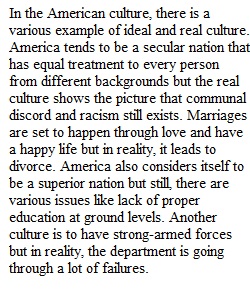


Q Questions: 1. This chapter discusses tensions between ideal culture and real culture in attitudes and practices in society. Things like conventional attractiveness and honesty are often at odds with each other. Can you think of other cases where ideal and real cultures collide in your culture? (Give 5 examples) 2. What is cultural capital? What, according to Bourdieu, is its significance in society? How does one acquire cultural capital and how is it linked to the reproduction of social class? How have you accumulated cultural capital in your life and how have you exchanged it for other forms of capital? 3. Think of a subculture to which you belong. Remember that subcultures include things like hobbies, religious groups, online groups, ethnic groups, etc. What are the norms, values, and material artifacts that distinguish members of your subculture from those who do not belong to it? Now apply the sapir-whorf hypothesis to your subculture; that is, what language is used in your subculture that is unique to this subculture and how does it shape the way you view/perceive the world. For example, I am part of the vinyl collecting subculture (I started collecting before it was the 'cool' thing to do =)) and language is a major part of this subculture in shaping my perceptions of the record itself. We use terminology such as Mint, Near Mint, VG+, dead-wax, '45's', needle, etc. to describe different aspects of records, from the quality to the size and shape. 4. For this question you are to watch the following video of the practice of 'Takanakuy' in Peru.
View Related Questions